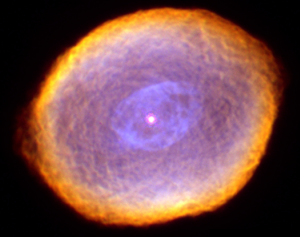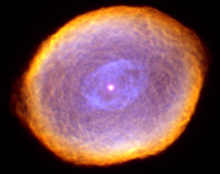The Spirograph [1]
For most of its life, a star like the Sun is drab. Seen from afar, it’s just a pinpoint of light. When the star dies, though, it’s like a caterpillar leaving its cocoon — as a beautiful butterfly.
As the nuclear engine in its core shuts down, a star sheds its outer layers of hot gas. They form a colorful bubble known as a planetary nebula. The nebula can glow for thousands of years as it expands and cools. The star’s rotation and magnetic field, as well as any companion stars, can sculpt the nebula into incredible shapes.
One of the most impressive planetary nebulas is known as the Spirograph. That’s because it resembles the geometric shapes produced by the old children’s toy. It’s probably more than 4,000 light-years away.
The Spirograph probably began taking shape about 50,000 years ago as seen from Earth, when the star expelled a shell of gas. A second outburst followed about ten thousand years ago. Both of those shells have faded.
About 2600 years ago, however, a third outburst produced the nebula that’s visible today. It spans about a fifth of a light-year, and it’s filled with filaments and bubbles of gas that produce its amazing appearance. The Spirograph should remain visible for thousands of years before it dissipates and vanishes.
The nebula is in Lepus, the hare, which bounds below the feet of Orion, which is in the southern sky on winter evenings. But you need a telescope to see this final act of a star.
Script by Damond Benningfield


